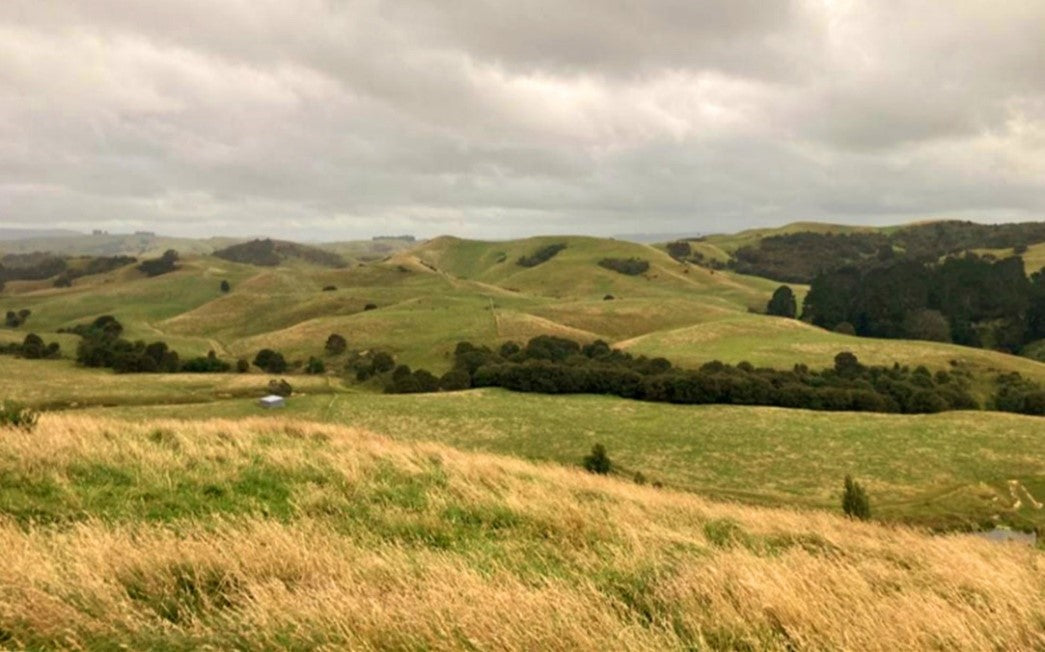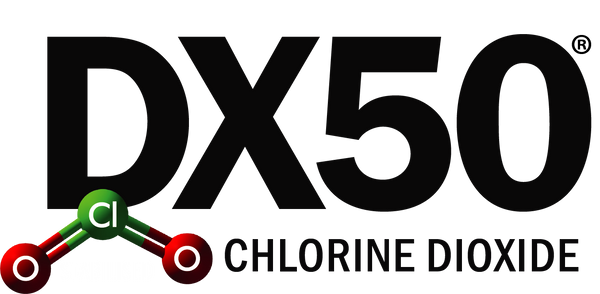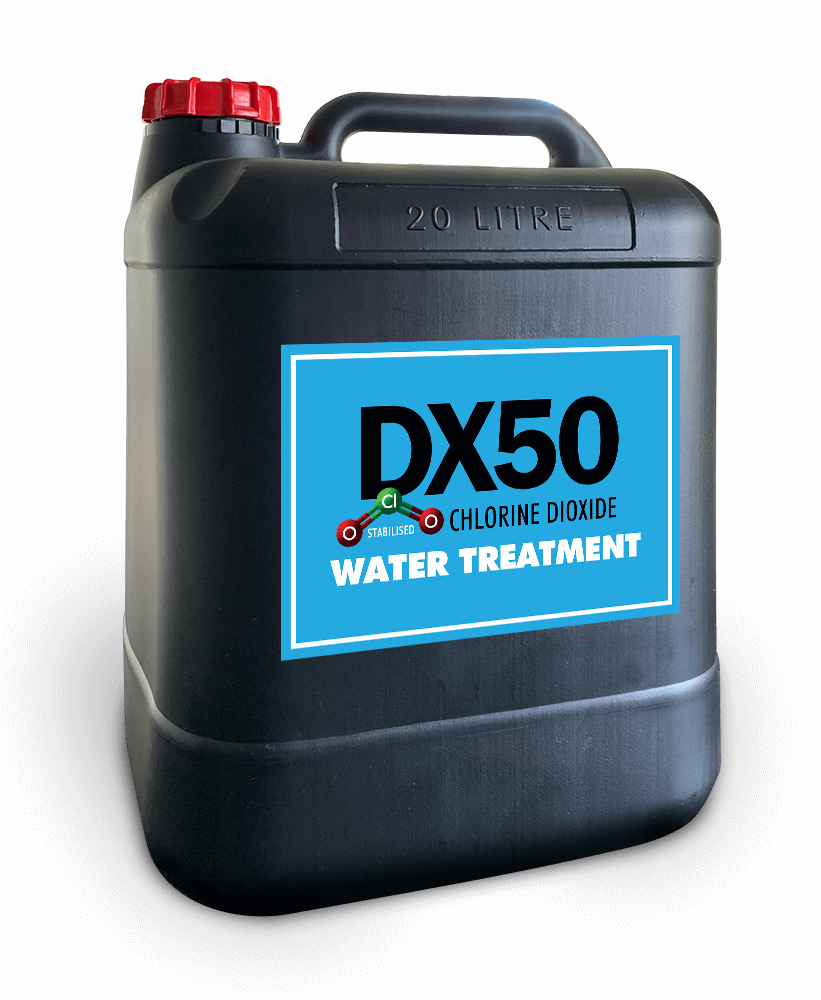
Hawkes Bay water supply scheme ditches chlorine
Share

Faced with an expensive UV system upgrade or dosing ‘significantly’ more chlorine to treat its fresh bore water under the New Zealand’s new water regulations, a private water supply scheme in the Hawkes Bay has chosen instead to trial a new dosing system using a better and more cost-effective water disinfectant, DX50 chlorine dioxide.
-----------------------------
Why did Farm Water Supply ditch chlorine? Because DX50 water treatment works differently to and better than chlorine, and it doesn’t cost the earth. It kills E. coli and Giardia, lasts the distance, and because it breaks down quickly and doesn’t create carcinogenic by-products, it is eco-friendlier than chlorine. Participants on the water scheme say that their DX50 treated water tastes great, with no nasty chlorine smell.
Who cares about the new rules? We all should. If you provide water to someone other than your personal household, you are considered a water supplier. All water suppliers in New Zealand must now meet the minimum water treatment and system requirements under the new rules and standards to ensure the water provided is safe to drink.
-----------------------------
Safer water treatment without the chlorine taste
Farm Road Water Limited is a private water supply based in the Hawkes Bay with a wide distribution network that stretches tens of kilometres.
To comply with New Zealand’s new drinking water standards and meet the minimum residual level throughout the network, the scheme faced either having to dramatically increase the chlorine dose or pay over $400,000 to upgrade the entire distribution supply to a UV and filtration system. After researching the options, participants elected to upgrade the system to use chlorine dioxide instead.
Chlorine dioxide is a proven and globally used water treatment option for water suppliers. With its stronger oxidative power and a lasting residual, chlorine dioxide is often rated the better and safer sanitiser. Unlike chlorine, it doesn’t create forever carcinogenic by-products in the treatment process, and there’s no nasty chlorine odour and taste.
Since the Farm Road Water supply scheme started dosing with DX50 chlorine dioxide, participants say the water tastes and smells great.
A wide water distribution network in high demand
The Farm Road Water supply scheme provides water to 56 rural properties across 10,000 hectares near Waipukurau in the Hawkes Bay. The properties comprise a mix of sheep and beef farms, lifestyle blocks and smaller subdivisions.
With a limited water permit and high demand, the scheme is running at full capacity. The only way to get a new connection is if an existing participant either reduces their allocation, sells, subdivides, or exists the scheme.

One of the original founders of the scheme is farmer Donald Strawbridge who has three supply tanks on his 583Ha farm and a 78,000L daily water allocation for his 400 cattle and 3000 sheep.
He explains, “We first started the scheme back in 1987 when the government was doing 50% subsidies for private water schemes. Ours was one of about 18 farms at the time that got on board, and we scraped enough people and money to get the Farm Road Water Supply scheme going."
“Every participant’s property on the scheme must have a minimum of a 22,000L tank to hold the water we supply. Farms over 50Ha are allowed up to 135 litres of water each per hectare for the property. Other properties below 50 hectares, the majority of which are lifestyle blocks, get an allocation of 135 litres a hectare, plus 2000 litres for the house. Many also collect rainwater from roofs for their drinking water. There is some availability to top up with our water if they run low, say, in a drought. About 120 people are on the scheme.”
How the Farm Road Water supply is distributed
Farm Road’s water is sourced from two 6.5-metre-deep infiltration galleries (bores) on the banks of the Tukituki River near Waipukurau. The water is treated and then pumped along the distribution network. Maric Flow Control valves fitted at the top of each participating supply tank manages the allocation by ensuring a constant flow, regardless of pressure. To prevent back flow, each tank must have an air gap at the ball cock. As most of the tanks are sited on a high point, the water is gravity fed from there to water troughs or pumped to other tanks around the farm.
Donald explained, “Our water source at the bores is drawn through the sand and gravel, so it's relatively clean. But to safeguard against E. coli and harmful bacteria, we used to always disinfect the water with a small amount of chlorine through the system. Tests rarely showed any chloroform or bacterial readings."
“However, with the new regulations, if we continued with straight chlorine, we’d have to dose the water with a lot more chemical. We didn’t want to do this because those properties closest to the pump would get a very strong taste and smell of chlorine, which some people don't like - especially farmers. Plus, chlorine is a bit more corrosive on brass fittings.”

Challenge of complying to the new water regulations
After the Havelock North water contamination event in 2016 which made thousands of people sick, New Zealand set about changing its water regulations to ensure everyone in the country has access to safe drinking water.
The new Water Services Act 2021 now requires anyone who supplies water to a third party to ensure that it is safe to drink. Even if the water sourced is the freshest and least contaminated pristine aquifers, water suppliers over a certain size must add a residual disinfectant (chlorine, chloroform, or chlorine dioxide) to the water, unless they obtain an exemption from Taumata Arowai which administers the rules.

|
By 2028, every single supply must have a system in place that complies with the new drinking water standards and meets all planning, monitoring, and reporting requirements. |
However, the speed of change has presented logistical and costly upgrade challenges for many public and private supplies. Rural supplies, like Farm Road Water, are often small to medium supplies managed privately by individuals or small business owners. By 2028, every single supply must have a compliant system in place that meets the new drinking water standards, as well as all planning, monitoring, and reporting requirements.
“Our water has always been very good. Only after the odd high flood, like when Cyclone Gabriel went through, did tests register very low levels of E. coli. We just upped our dosing levels and were on boil water notice for a week before we were tested again it was all clear. Marcus Hyde-Hills, who worked for the DHB when we first met, still helps us today on the compliance side of things and keeps us up to date on stuff,” said Donald.

Drinking-water and Environmental Consultant, Marcus Hyde-Hills helps suppliers to meet their compliance obligations under his company Safe Supply Limited.
He said, “My involvement originally with Donald was back in 2018 when I was the drinking water assistance program facilitator at the Hawke's Bay DHB. At the time, it was envisaged that the water supply would meet the Health Act requirements by falling under what was called a Rural Agricultural Water supply. Taumata Arowai’s Drinking Water Quality Assurance rules are now the minimum requirements around what you have to do to provide safe water. If Farm Road could meet the criteria, then they could essentially demonstrate compliance by having a water safety plan and demonstrating that they provide safe water.”

Amongst the many responsibilities, all water suppliers must provide a water safety plan, a source water risk management plan, define the Maximum Acceptable Values (MAVs) for all chemical and microbial contaminants, and they must regularly monitor, sample and report on water quality. The only connections that are exempt from the legislation are domestic self-suppliers. That said, the Building Act 2004, requires any building intended for use as a dwelling/ house to have an adequate supply of potable water.
Marcus says the rules are intricate and can be confusing, particularly as all water supplies are configured differently. “For example, under water treatment model three, suppliers like Farm Road Water can pick and mix their source, treatment, and distribution options. They can use source two for abstraction, treatment three for the treatment of bacterial and protozoa (which includes chlorine dioxide as an option), and then distribution two for the distribution network.
“I think many water supplies are doing the best they can to upgrade their systems,” he said. “It all comes down to how much money do they have to invest to treat water and make it safe?"
“Supplies only have until 2028 to be fully compliant with the new drinking water rules. But the big handbrake is that the Water Services Act 2021 says that every water supply must provide safe water. So, there is no ‘you've got five years to comply’, it's a legal obligation today,” he said.
Weighing up the costs
To meet the new standards, Farm Road participants faced either having to significantly increase the chlorine dose or implement a costly UV system upgrade. Neither option appealed. So, Donald did a fair bit of research to try and find a cost-effective alternative. They then presented the options to the participants at their AGM.
Donald explained, “Because chlorine is acidic, increasing the dose would corrode brass fittings and increase maintenance and running costs. A UV system would shut down if the water contained too much organic material. Everyone agreed that DX50 chlorine dioxide was the way to go. It might be a little bit dearer than chlorine, but we don’t get the chlorine odour or taste, plus it’s noncorrosive. It was a win-win for DX50."
“Otherwise, to achieve compliance throughout our distribution network, we would have had to significantly increase the chlorine dosage. With DX50 chlorine dioxide, we just use an automatic doser to add 50 mils per 1000 litres of water pumped. It is a lot less chemical than what we would have needed had we continued with chlorine, plus it’s a better sanitiser.”
New chlorine dioxide dosing and monitoring system
After talking with Water Force and DX50, Farm Road Water Supply agreed a plan for implementing the new dosing and monitoring system using chlorine dioxide. And the switch to the new dosing system happened in March 2023.
|
“So far, we’ve not had any problems. We’ve filled up the tank a few times already (we use about one 1000L DX50 pod a month), and it seems to be working really well.” |
“The chlorine dioxide is automatically pumped from the DX50 container pod into the bottom of a sealed 2000L dosing tank. At the top of the tank is vent pipe which has a little one-way valve that, as the chemical is sucked out and injected into the water, allows air back in but nothing out. This relieves the pressure inside the tank,” said Donald.

Donald said that to meet the new requirements their dosage amount and chemical costs would have increased regardless of which disinfectant they used. Had they continued with chlorine, the massively increased dose would have added terrible chlorine taste and odour to the water for those properties closest to the source. With chlorine dioxide they wouldn’t need as much chemical, and the water would still taste and smell fresh. It was the more appealing and cost-effective solution.
“To meet the minimum requirement for available chlorine, dosing now costs us about $4,000 a month with chlorine dioxide. Consequently, our water cost has gone up from 28 cents per cubic meter to about 50 cents per cubic meter, and it’ll likely increase as we add further improvements to the network. As a comparison, I think town supply costs about $2.00 per cubic meter,” he said.
“Since switching to DX50 chlorine dioxide, tests show that we have good clean water throughout the system. We hope to get confirmation from Taumata Arowai that we can continue to treat with chlorine dioxide without needing to pay a further $350,000 to install a UV system, and significantly more on power.”

Get the right advice!
Marcus says that supplies needing help with upgrading their systems should talk with someone who has a good understanding of the intricacies of the rules. “Someone with experience who can go through and draw the dots and say: ‘This is what you are, this is what the water is, this is what we must treat, these are our treatment modules. We can achieve compliance by using these rules for some water supplies or use chlorine dioxide as Donald is doing,” he said.
“The reality of it is any system can fail. So, you need a multi-barrier approach, namely knowing your source water, having filtration, having a disinfectant, and knowing your distribution network."
“As for the Farm Road Water supply, they have quite a good understanding of their catchment. When there is a flood, they do turn their pumps off, and they do regularly check the microbiological quality of their water to ensure that it's safe. They are now looking to install a good filtration option, because they deal with such vast volumes of water at massive pressure. With DX50 chlorine dioxide as the disinfectant, they can maintain a residual throughout the network.”
Donald is really pleased with the new DX50 chlorine dioxide dosing system at his Farm Road Water Supply scheme. “So far, we’ve not had any problems. We’ve filled up the tank a few times already (we use about one 1000L DX50 pod a month), and it seems to be working really well,” he said.








